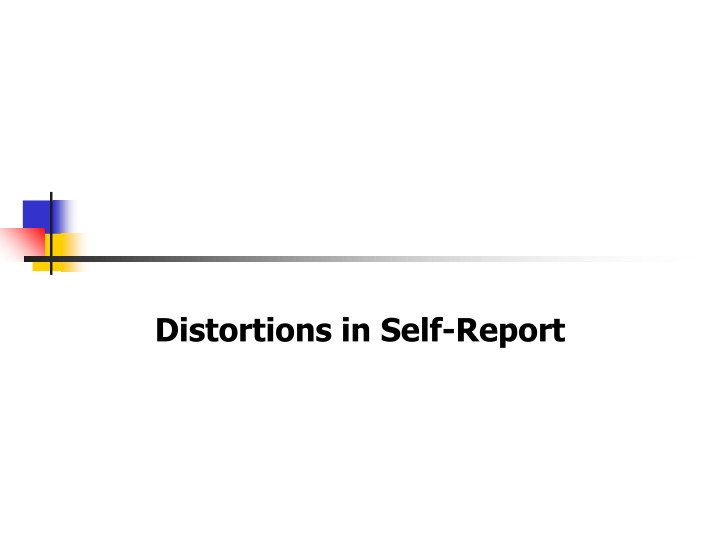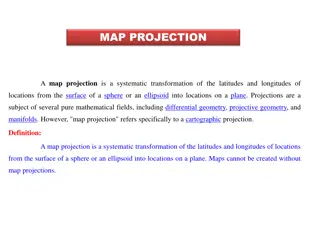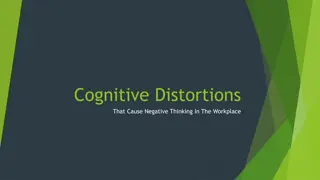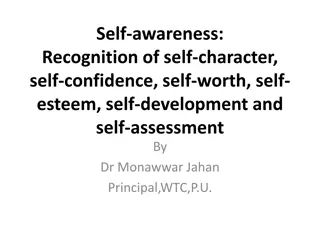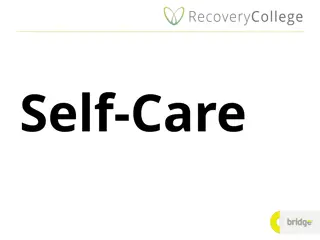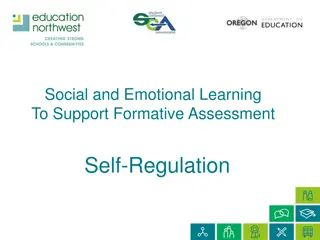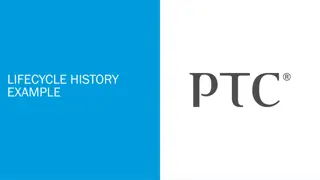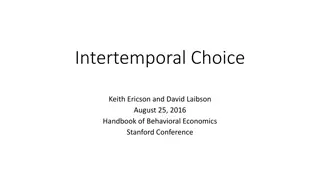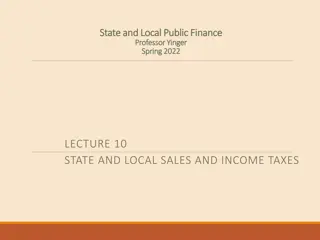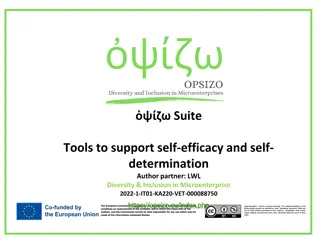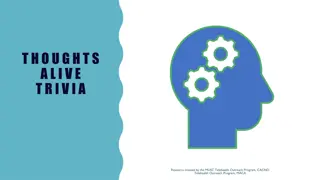Distortions in Self-Report
Discover the intricacies of self-report distortions and their impacts on research and surveys. Explore strategies to mitigate biases and enhance data accuracy for more reliable outcomes and informed decision-making processes.
Download Presentation

Please find below an Image/Link to download the presentation.
The content on the website is provided AS IS for your information and personal use only. It may not be sold, licensed, or shared on other websites without obtaining consent from the author.If you encounter any issues during the download, it is possible that the publisher has removed the file from their server.
You are allowed to download the files provided on this website for personal or commercial use, subject to the condition that they are used lawfully. All files are the property of their respective owners.
The content on the website is provided AS IS for your information and personal use only. It may not be sold, licensed, or shared on other websites without obtaining consent from the author.
E N D
Presentation Transcript
Overview of Lecture 1) Assessment sequence 2) Introduction to self-report 3) 15 types of self-report distortions 4) Tying it together
Distortions in Reports The Client 1) Distortion during interviews 2) Distorted responding on questionnaires* 3) Distortions in previous reports Other Professionals 4) Distortions in assessor perceptions 5) Distortion in test interpretation 6) Distortions in writing You
Sequence of Assessment First Second Third Screeners Ethics Forms Interview Questionnaires Overly positive Neutral Overly negative
The Case of JB 23-year-old single male presented on crisis initially in early May 2021 suicide attempt in April 2021 AWOL referred for a diagnostic assessment
The Case of JB Screeners Ethics Forms Interview Questionnaires PHQ-9 = 15 GAD-7= 21 PCL-5 = ns PAI-2 1 hour 15 minute hesitant
The Case of JB... Was JB telling the truth? Can I write up test results? Global PAI Subscales
Ten-item Personality Inventory (TIPI) Gosling et al. (2003) Extraversion: 1, 6R Agreeableness: 2R, 7 Conscientiousness; 3, 8R Emotional Stability: 4R, 9 Openness to Experiences: 5, 10R
N = 13 E = 5 O = 11 A = 11 C = 12 3 2 6 2 5 6 5 2 7 2
Self-report most commonly used frequently criticized process is complex
Types of self-report 1) Direct clear and simple TIPI, NEO, PAI 2) Indirect obscure construct assessed Paulhus Deception Scales MMPI (subtle items) Alcoholism Scale 3) Open-ended I am
Advantages of self-report 1) Information richness intrapsychic processes 2) Motivation to report 3) Practical efficient inexpensive
But complete and accurate disclosure is rare all individuals fall short of full and accurate self- disclosure, irrespective of the social context (Rogers, 2012, p. 4). There are two types of data (Funder) no data distorted data
Types of Self-Report Distortions 01) SD responding 02) Acquiescence/Reactance 03) Extreme responding 04) Irrelevant responding 05) Self-knowledge 06) Cultural limitations 07) Decompensation 08) Feigning 09) Suboptimal effort 10) Role assumption 11) Hybrid responding 12) Centralized responding 13) State versus Trait 14) Inconsistency 15) Defensiveness
Types of Self-Report Distortions 1) Socially desirable responding Impression Management exaggeration, faking and lying Self-deception Enhancement self-favouring bias, defensiveness, denial
Socially Desirable Responding Case of MAHU BDI-II = 0 BAI = 0 MCMI-III = nothing significant PDSQ = 1 of 111 items endorsed PAI-II = nothing significant (see profile)
Controlling for SDR 1) Don t use SD items 2) Maximize anonymity and confidentiality 3) Adjust for bias - MMPI K-correction 4) Don t use or interpret data
Types of Self-Report Distortions 2) Acquiescence/Reactance Yay sayers Acquiescence agrees with all statements all true responding Nay sayers Reactant disagrees with all statements all false responding
Types of Self-Report Distortions Controlling for acquiescence/reactance balance the scoring key I am dominant I am submissive (reverse coded) I am friendly I am an unfriendly (reverse coded)
Types of Self-Report Distortions Controlling for acquiescence/reactance Disadvantage of balancing the key reduces alpha reliability factor analysis produces 2 factors
Types of Self-Report Distortions 3) Extreme Responding (ER) tendency to give 1s and 7s frequently not due to malingering or socially desirable responding caused by: emotional arousal rapid responding black and white processing
Types of Self-Report Distortions Controlling for extreme responding Use dichotomous questionnaires True or False The Case of ABC PAI 4 point scale (profile was uninterpretable) MCMI True and False (profile was clearer)
Types of Self-Report Distortions 4) Irrelevant responding (random) To control: Use of nonsense items PAI My favourite poet is Raymond Kertzec (captured by INF) MCMI- not seen a car in the last 10 years (captured by validity )
Types of Self-Report Distortions 5) Constraints on self-knowledge limited introspection presence of PD (lack of insight)
Types of Self-Report Distortions 6) Cultural limitations differential responding for non-Caucasian groups language difficulties intellectual/educational deficiencies
Controlling for language difficulties Screeners Ethics Forms Interview Questionnaires thorough interview don t test
Types of Self-Report Distortions 7) Decompensation (across test) responding changes across a test F back : MMPI INC : PAI
Types of Self-Report Distortions 8) Feigning distortion of test results in a negative direction looking worse than you are Malingering Factitious Disorder Exaggerate pathology (disorder +)
Types of Self-Report Distortions The Case of COO male, 26, non-Caucasian claimed workplace bullying sent 5 page email word bullying 33 times 9 grievances wanted financial compensation came to interview with PTSD agenda
Types of Self-Report Distortions Test results PDS: IM = 78, SDE = 83 PAI: traumatic stress = 94 persecution = 86 social detachment = 74 treatment rejection = above average
Types of Self-Report Distortions Diagnosis Adjustment Disorder avoidant and paranoid traits Not happy with diagnosis Requested reassessment 2ndpsychologist did not confirm PTSD
The Case of CR 25-year-old female reported experiencing depression, anxiety, trauma PHQ-9: 14 (moderate depression) GAD-7: 15 (severe anxiety) PCL-5: 50 (moderate trauma)
The Case of CR Screeners Ethics Forms Interview Questionnaires seemed ok had variability unusual disclosures invalid profiles
The Case of CR Was CR telling the truth? Global PAI TSI-2 results What do you think?
Types of Self-Report Distortions 09) Sub-optimal responding lack of engagement due to many factors severe mental illness fatigue ordered assessment lack of belief in process defensiveness
Controlling for sub-optimal Screeners Ethics Forms Interview Questionnaires get them to buy in (skeptical) test on another day (fatigue) decide not to assess (mentally ill)
Types of Self-Report Distortions 10) Role responding responding as if you were someone else as in a role (like a police officer or good parent)
Types of Self-Report Distortions 11) Hybrid responding respond accurately for some things respond inaccurately for others i.e., pre and post accident symptoms
Types of Self-Report Distortions 12) Centralized responding demonstrates variability in responding sticks to average-like responses e.g., 7-point scale use 3, 4, 5
Types of Self-Report Distortions 13) State Versus Trait states impair ratings of traits e.g., when depressed... hard to separate MCMI has a correction factor due to A and D 5 PD scales are adjusted
Types of Self-Report Distortions 14) Inconsistency similar items not responded to in same way Q: I sleep well. (T) Q: I don t sleep well. (T) pairs of items used to detect this distortion MMPI, PAI, MCMI all use consistency scales
